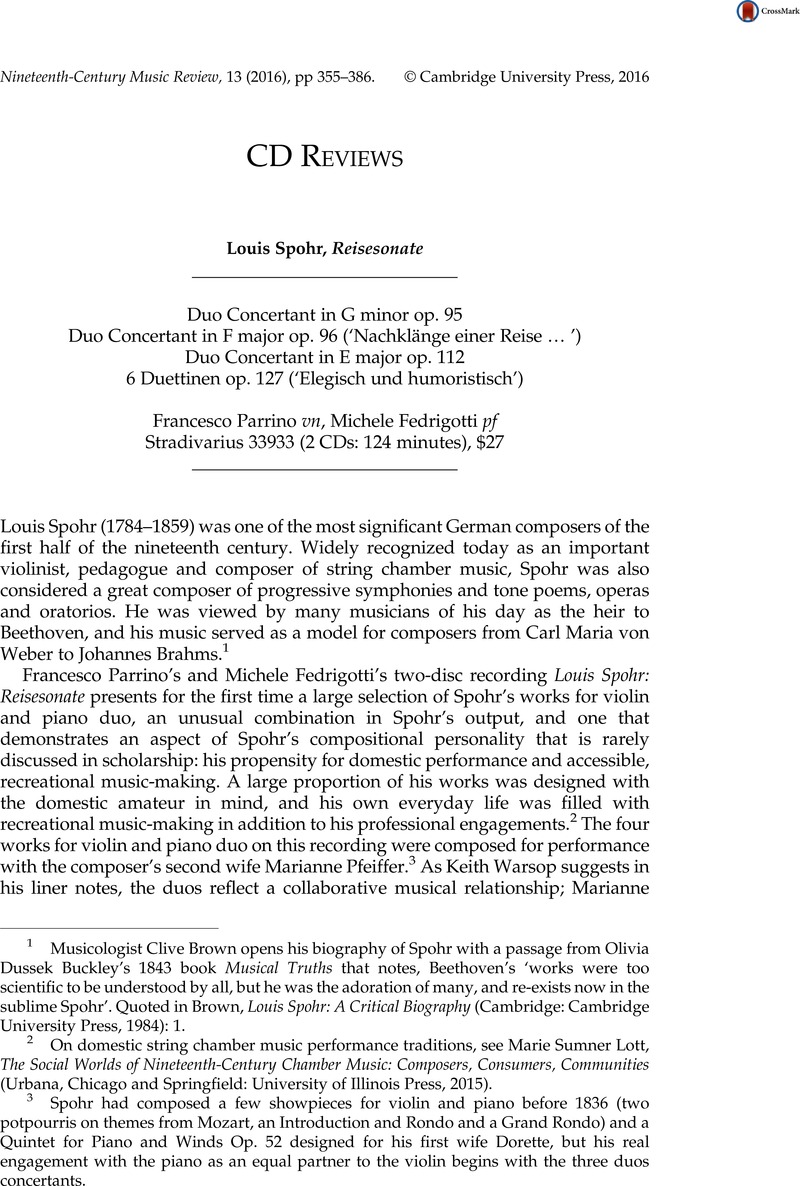No CrossRef data available.
Published online by Cambridge University Press: 01 April 2016

1 Musicologist Clive Brown opens his biography of Spohr with a passage from Olivia Dussek Buckley’s 1843 book Musical Truths that notes, Beethoven’s ‘works were too scientific to be understood by all, but he was the adoration of many, and re-exists now in the sublime Spohr’. Quoted in Brown, , Louis Spohr: A Critical Biography (Cambridge: Cambridge University Press, 1984): 1 Google Scholar.
2 On domestic string chamber music performance traditions, see Lott, Marie Sumner, The Social Worlds of Nineteenth-Century Chamber Music: Composers, Consumers, Communities (Urbana, Chicago and Springfield: University of Illinois Press, 2015)Google Scholar.
3 Spohr had composed a few showpieces for violin and piano before 1836 (two potpourris on themes from Mozart, an Introduction and Rondo and a Grand Rondo) and a Quintet for Piano and Winds Op. 52 designed for his first wife Dorette, but his real engagement with the piano as an equal partner to the violin begins with the three duos concertants.
4 As was often the case in Spohr’s life, the vacation included many instances of domestic music with local amateurs; in this case, Spohr mentions his performance with Marianne of the newly composed sonata and other works. See Louis Spohr’s Autobiography (New York: Da Capo, 1969): 195–201. Spohr’s detailed account of the sonata’s programme is on pp. 200–201.